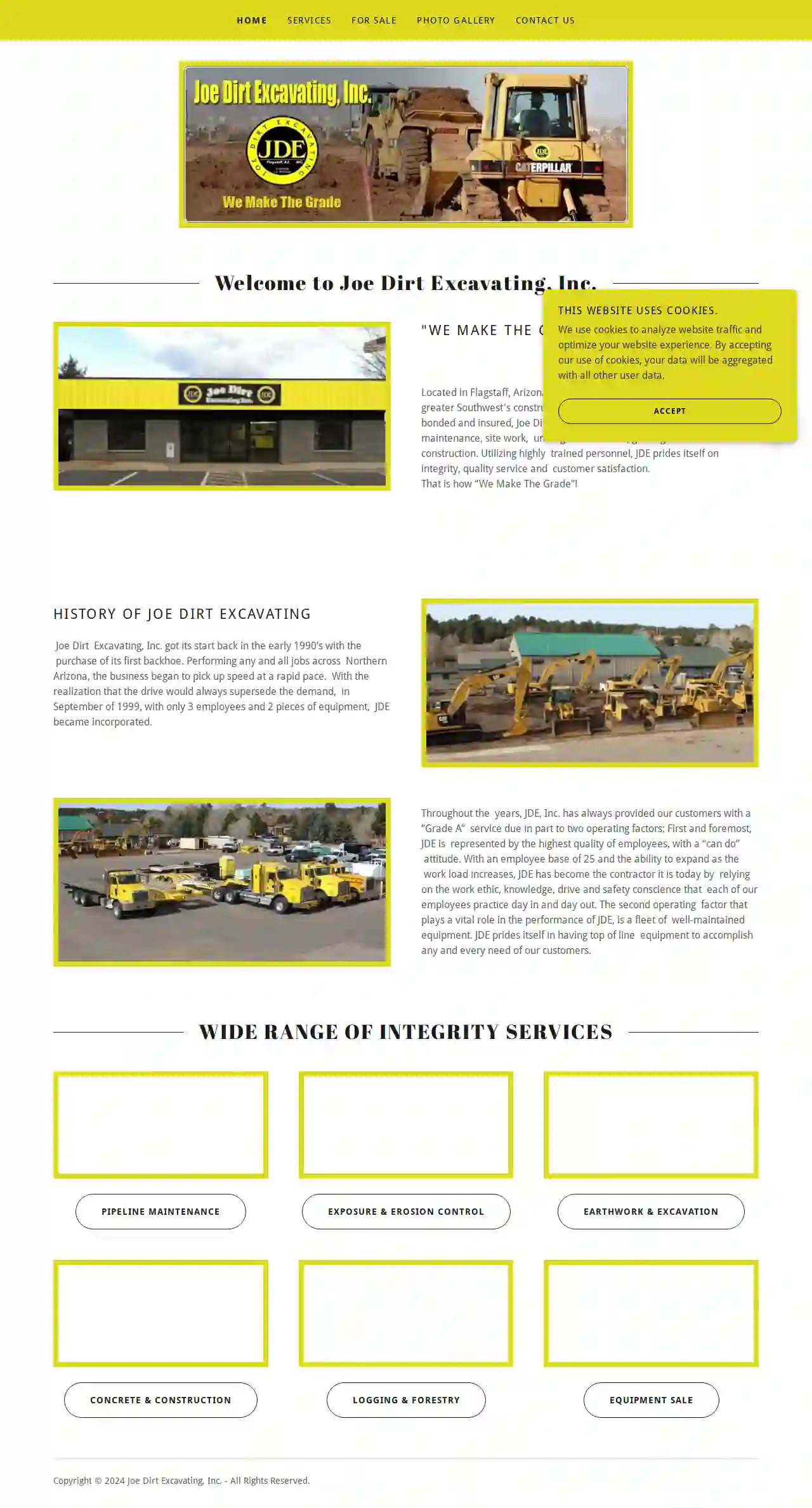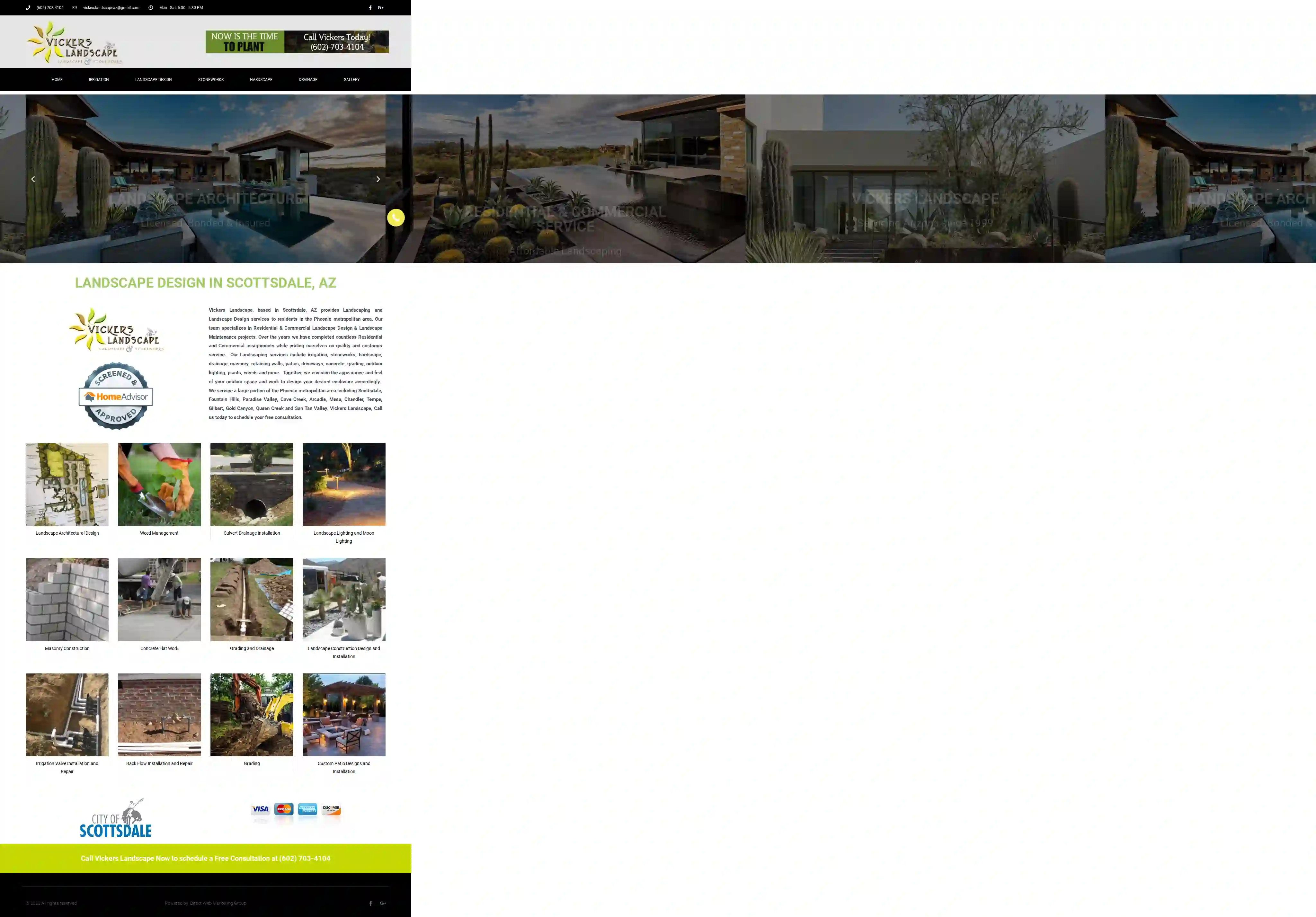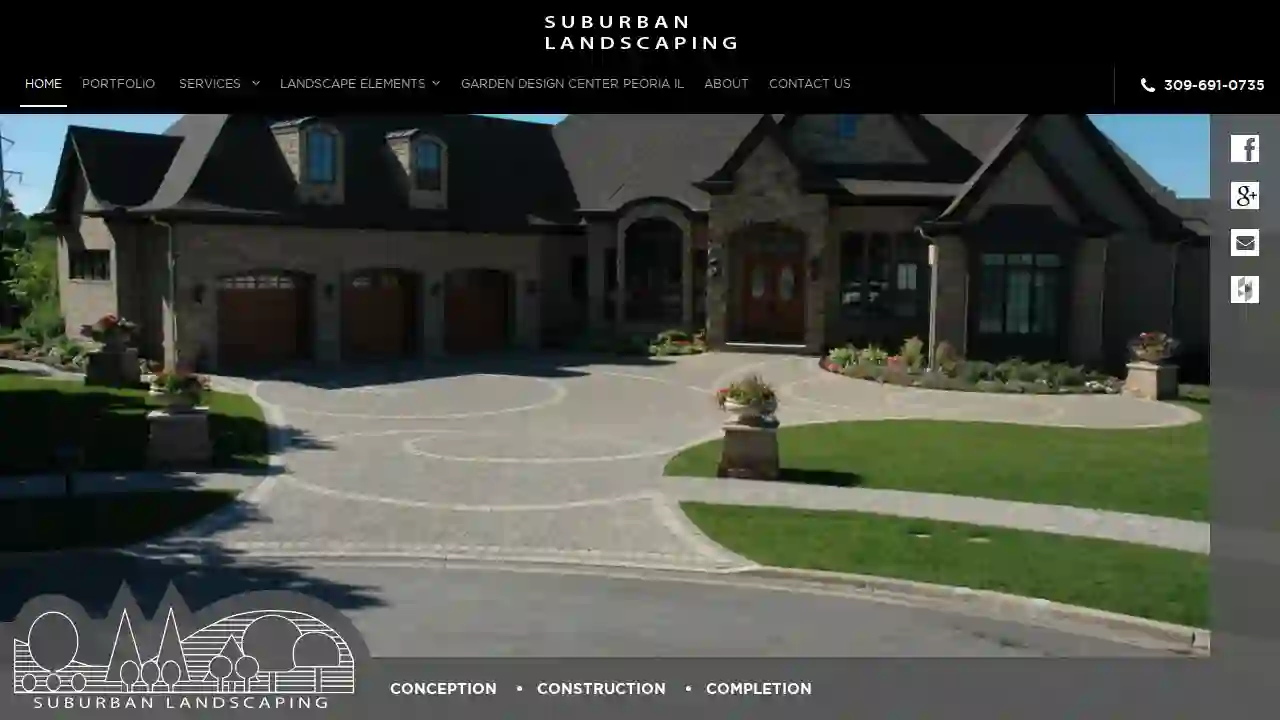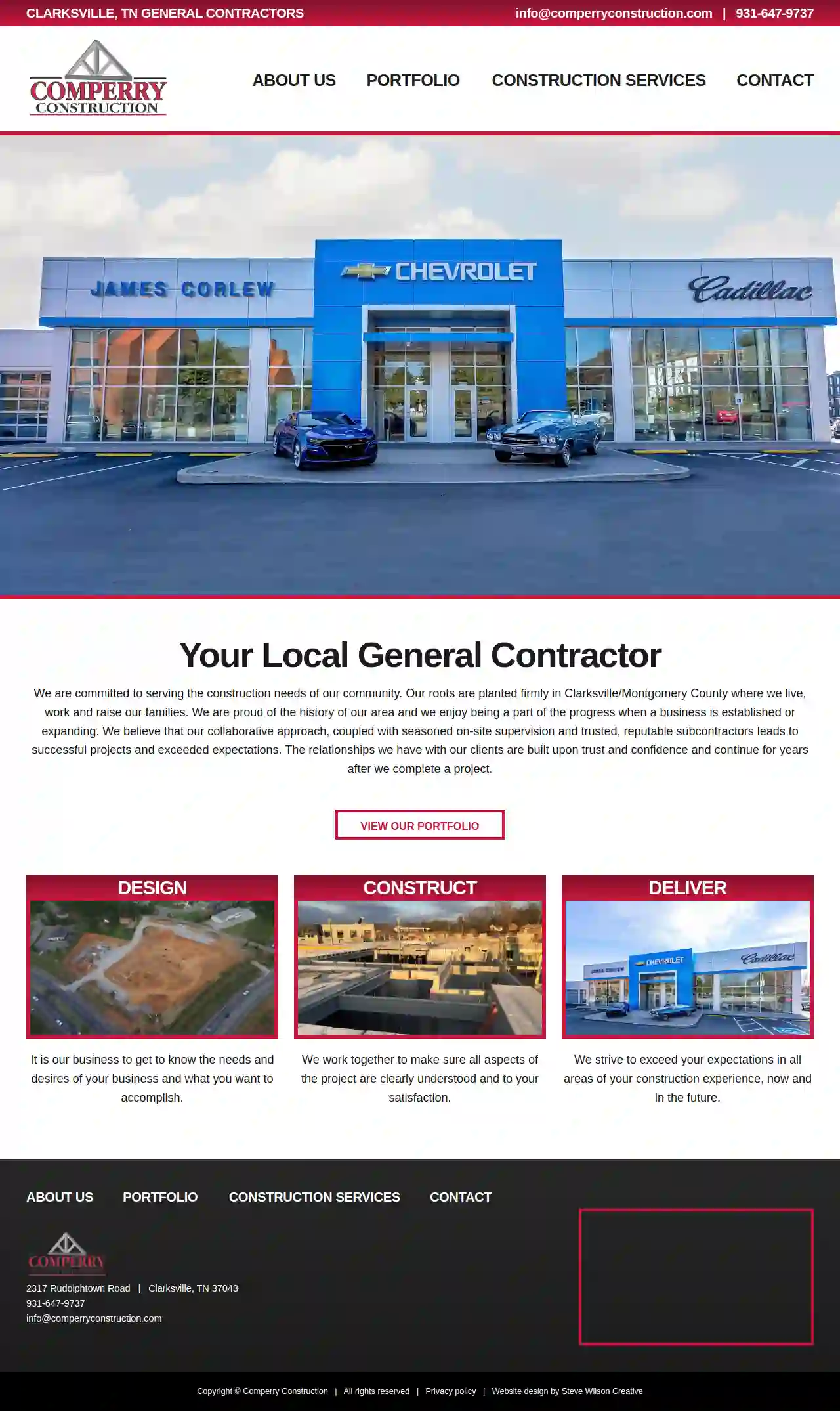Dirt Contractors Chandler
Find the best Dirt Contractor in Chandler
Receive multiple Dirt Removal quotes for your project today! Compare profiles, reviews, accreditations, portfolio, etc... and choose the best offer.

Joe Dirt Excavating
48 reviewsPhoenix, US- Services
- Why Us?
Get Quote
Goodwillie Earthwerks
52 reviewsTucson, USOver 2 Decades of Excavation Experience Goodwillie Earthwerks has nearly two decades of experience in excavation, demolition, clearing and hauling. We offer a wide array of services from basic grading and drainage solutions to utility infrastructure design and install. At Goodwillie Earthwerks, we take great pride in our reputation in quality work and highly satisfied customers. Why Choose Our Excavating Contractor? We gladly go the extra mile to ensure your 100% satisfaction! Goodwillie Earthwerks, Inc is a locally owned and operated excavating company in Tucson, AZ. We are your top choice for excavating contractors! If you're looking for a professional excavating contractor in the Oro Valley and Tucson, AZ area who specializes in excavation needs and services, look no further than Goodwillie Earthwerks. Our excavating company can handle everything for you! We've been providing long-term care and attention to detail when you need work done on your commercial property for many years. We strive to provide quality and professional workmanship at competitive prices for all types of excavation work. You can rely on our team of experienced excavating professionals to be there for you from the first consultation to the big reveal! Goodwillie Earthwerks is a group of highly trained excavating professionals who pay attention to the smallest details and strive for excellence. Using our services can improve the appearance of your commercial or residential property and increase its value. Your commercial and residential properties will look great when you choose to work with Goodwillie Earthwerks's excavating contractor! When you give us a call, you will be connected directly to our owner, so you can expect immediate attention to your inquiry. So, don’t wait. Call us today!
- Services
- Why Us?
- Testimonials
- Gallery
Get Quote
Vickers Landscape LLC
52 reviewsPhoenix, USVICKERS LANDSCAPE Servicing Arizona since 1999 LANDSCAPE ARCHITECTURE Licensed, Bonded & Insured RESIDENTIAL & COMMERCIAL SERVICE Affordable Landscaping
- Services
- Why Us?
- Gallery
Get Quote
Kimble Landscaping & Excavating Inc
2.910 reviews22811 Hardscrabble Rd., Sparland, 61565, USWITH KIMBLE EXCAVATING, THERE'S NO JOB TOO BIG OR TOO SMALL Call us today to get started on your next project. A FEW OF OUR PROJECTS FOUNDATION REPAIR Your building may need an inspection if you notice water logging at the foundation instead of it flowing away from your home. Oftentimes, water will get trapped within the foundation, freeze, and then cause the foundation to crack. View more EXCAVATING From grading and finish seeding to ponds and creek crossings, we offer a wide variety of excavating services to meet your needs. View more CONCRETE & ROCK We can handle any concrete and rock installations or repairs for residential and agricultural settings. View more SERVING THE FOLLOWING COMMUNITIES FOR OVER 40 YEARS: Peoria, Dunlap, Washington, East Peoria, Germantown Hills, Princeville, Hanna City, Spring Bay, Chillicothe, Bartonville, Sparland, Lacon, Henry
- Services
- Why Us?
- Gallery
Get Quote
MB LANDSCAPE LLC
515 reviewsPhoenix, USAt MB Landscape, we pride ourselves on delivering high quality residential and commercial services. We prioritize your needs by listening and paying attention to every detail of your project, and we work hard to ensure your satisfaction is our number one priority. View our services to see how we can help you knock out your next project on time and on budget!
- Services
- Why Us?
- Gallery
Get Quote
Suburban Landscaping
3.98 reviewsPeoria, USSuburban Landscaping: Transforming Your Outdoor Vision Suburban Landscaping is a premier landscaping company serving Peoria, Illinois. We specialize in creating beautiful and functional outdoor spaces that enhance the beauty and value of your property. From meticulous lawn care to stunning landscape designs, we offer a comprehensive range of services to meet your unique needs. Our team of experienced professionals is dedicated to providing exceptional customer service and high-quality workmanship. We take pride in our attention to detail and commitment to exceeding your expectations. Whether you're looking to create a relaxing oasis, a vibrant garden, or a low-maintenance landscape, we have the expertise and creativity to bring your vision to life. At Suburban Landscaping, we believe that your outdoor space should be an extension of your home, a place where you can relax, entertain, and enjoy the beauty of nature. We are committed to providing you with the best possible experience, from the initial consultation to the final touches.
- Services
- Why Us?
- Gallery
Get Quote
Comperry Construction
54 reviews2317 Rudolphtown Road, Clarksville, 37043, USComperry Construction: Your Local General Contractor Comperry Construction is a Clarksville, TN based general contractor committed to serving the construction needs of our community. We are proud of the history of our area and we enjoy being a part of the progress when a business is established or expanding. We believe that our collaborative approach, coupled with seasoned on-site supervision and trusted, reputable subcontractors leads to successful projects and exceeded expectations. The relationships we have with our clients are built upon trust and confidence and continue for years after we complete a project. We are licensed general contractor by the State of Tennessee and carry an unlimited monetary limit. Our services range from minor renovations to ground up multilevel facilities. Our Process We work together to make sure all aspects of the project are clearly understood and to your satisfaction. We strive to exceed your expectations in all areas of your construction experience, now and in the future.
- Services
- Why Us?
- Gallery
Get Quote
Revolutionary Contracting
4.930 reviewsPhoenix, US#1 LOCAL CONTRACTOR MIDDLE TENNESSEE We Get Your Project Done Right from Roofs to Renovation Revolutionary Contracting is the premier contractor in Indian Mound and Clarksville, TN. Our professional team is experienced, reliable, and honest. Our goal is to be the local contractor Middle Tennessee focused on exceptional service for all of our customers. We are your full-service contractor for your whole project, start to finish. From design, drone operations, remodeling, roofing, to new construction. We cover all of your residential and commercial contracting needs throughout Middle Tennessee. Revolutionary Contracting is proud to be Veteran-owned & Operated! EXPERIENCED Over 35 years of experience in the industry! HONEST We pursue integrity in every aspect of our business. RELIABLE You can count on us to do what we say! Remodeling Contractor Middle Tennessee Any issues with your property, turn to Revolutionary Contracting. We have over 35 years of experience in the industry, and you count on amazing results. Our service range from all aspects of construction and repairs for both residential and commercial properties.You can call on our remodeling company for home improvements, kitchen and bathroom renovations, storm damage repair, landscaping, property inspections, and more. Plus, our contractors are certified to fly drones commercially.You can trust our team to make your vision a reality! Call (931) 627-4813 to schedule a free estimate for any of your home improvement needs. Be sure to ask about our 10% discount for US military members, first responders, and senior citizens. Proudly Offering Financing Through our Partner Hearth!
- Services
- Why Us?
- Gallery
Get Quote
Rango Inc
3.521 reviews4215 E McDowell Rd, Mesa, 85215, USLifting Your Burden, Building Tomorrow. Rango is a leading provider of construction and mining services, dedicated to redefining the industry by lightening your load and shaping a better future. We prioritize safety and efficiency, employing advanced technologies and rigorous measures to ensure successful projects and peace of mind for our clients. Our team of experienced professionals, including executives, superintendents, and operators, is committed to delivering exceptional service and exceeding your expectations. With a state-of-the-art fleet of equipment, including excavators, haul trucks, dozers, scrapers, wheel loaders, and support equipment, we have the resources to handle any project, no matter how complex. We are proud to operate one of the finest transport equipment fleets in the market, ensuring your materials are delivered safely and efficiently. At Rango, we are more than just a company; we are a team dedicated to building lasting relationships with our clients. We are committed to providing the highest level of service and support, ensuring your success every step of the way.
- Services
- Why Us?
- Our Team
- Gallery
Get Quote
A&E Excavation
51 reviews216 Dishman Lane, Bowling Green, 42101, USFrom The Ground Up A&E Excavation and A&E Trucking offers an extensive range of services encompassing all facets, from excavating footers to providing topsoil, ensuring the project's successful conclusion. Who We Are A&E Trucking and Excavation, a company based in Bowling Green, KY, prides itself on being both owned and operated by Veterans. Our commitment lies in executing every task with the utmost professionalism. We eagerly anticipate the opportunity to assist you in bringing your commercial and industrial projects to fruition. Reach out to us today for further information. Excavation Pros at setting up building pads, parking lots, footings, utilities, septic systems, and leveling the playing field! Trucking We offer a range of materials including topsoil, fill dirt, and various types of stone. Additionally, the company specializes in custom hauling and haul-off services. Pride In Our Community Our core objective revolves around supporting businesses in actualizing their commercial and industrial ventures. Our organization is dedicated to delivering vital services to our growing community. We are enthusiastic about furthering our involvement as our community flourishes. From Site Prep To Topsoil We possess the expertise to manage projects of various scales. Whether you are at the inception or culmination of your project, our support remains unwavering. Initiate contact with us to explore how we can contribute to realizing your project aspirations. Commercial & Industrial Ensuring your satisfaction with the level of professionalism maintained at each job site is of utmost importance. Contact us for a free consultation. Multi-Residential Site Prep Initiate your subdivision project successfully by leveraging the expertise of A&E professionals. Contact us today! Commercial Site Prep A&E is proficient in preparing construction sites to facilitate seamless operations. Topsoil If your project requires topsoil, please reach out to A&E Trucking to arrange for a prompt delivery. Contact us! Stone Stone for your upcoming project? Our supply encompasses a diverse array of stone types. Commercial & Industrials Let's Create Something Great We approach every project with confidence and enthusiasm, ready to collaborate with each and every customer. Our primary objective is to provide exceptional service, regardless of the scale of the project. Engage us in your upcoming development; we are eager to combine efforts and create remarkable outcomes together. Let us embark on this exciting journey side by side! Backfill and Recompacting We specialize in precise backfilling, ensuring proper compaction from start to finish. A&E Excavating is renowned for its unmatched industry expertise and a vast clientele who are consistently satisfied, positioning us as a reputable leader in grading, excavation, recompacting, and similar services.
- Services
- Why Us?
- Gallery
Get Quote
Over 3,943+ Excavation Businesses on our platform
Our excavation contractors operate in Chandler and beyond!
ExcavationHQ has curated and vetted Top Excavation Businesses in and around Chandler. Find the most trustworthy pro today.
Frequently Asked Questions About Dirt Contractors
- Project Scope: The size and complexity of the project, including the volume of dirt to be moved, the distance for hauling, and the type of services required.
- Dirt Type: Different dirt types have varying costs based on availability and demand. Topsoil is typically more expensive than fill dirt.
- Location: Costs may differ depending on the contractor's location and the accessibility of the project site.
- Equipment Needed: Specialized equipment, such as excavators, bulldozers, or dump trucks, can influence the overall cost.
- Labor Costs: The number of workers and their hourly rates will affect the labor portion of the cost.
- Plant Selection: Understanding your soil's pH and nutrient levels helps you choose plants that will thrive in those conditions.
- Fertilizer Recommendations: Soil tests reveal nutrient deficiencies, allowing you to apply appropriate fertilizers to meet plant needs.
- Soil Amendments: Identify soil imbalances, such as compaction or high clay content, and recommend amendments to improve soil structure and drainage.
- Construction Projects: Assess soil bearing capacity and other properties to ensure the stability and safety of foundations and other structures.
- Environmental Assessments: Detect potential soil contamination and determine the need for remediation.
- Clean Fill: Consists of uncontaminated soil, rock, or gravel, free from organic matter, debris, or hazardous substances. Suitable for most construction and landscaping projects.
- Structural Fill: A compacted granular fill, typically gravel, crushed stone, or a mixture of both, used for structural support and drainage. Ideal for foundations, roadways, and retaining walls.
- Engineered Fill: A specifically designed and blended soil mix with controlled properties, such as compaction, drainage, or bearing capacity, tailored for particular applications.
- Unsuitable Fill: Materials like topsoil, organic matter, or contaminated soil that are not suitable for structural fill due to their potential for decomposition, settlement, or environmental concerns.
- Online Directories: Utilize online directories like ExcavationHQ that specialize in connecting homeowners and businesses with qualified contractors. You can filter your search by location, service type, and read reviews from previous customers.
- Referrals: Ask friends, family, neighbors, or colleagues for recommendations based on their experiences with dirt contractors.
- Local Building Supply Stores: Inquire at local building supply stores, as they often have connections with contractors in the area.
- Online Reviews: Check online review platforms like Google My Business, Yelp, and Angie's List for insights into contractor reputations and customer feedback.
How much does it cost to hire a dirt contractor?
What is a soil test, and why is it important?
What are the different types of fill dirt?
How do I find a reputable dirt contractor near me?
How much does it cost to hire a dirt contractor?
- Project Scope: The size and complexity of the project, including the volume of dirt to be moved, the distance for hauling, and the type of services required.
- Dirt Type: Different dirt types have varying costs based on availability and demand. Topsoil is typically more expensive than fill dirt.
- Location: Costs may differ depending on the contractor's location and the accessibility of the project site.
- Equipment Needed: Specialized equipment, such as excavators, bulldozers, or dump trucks, can influence the overall cost.
- Labor Costs: The number of workers and their hourly rates will affect the labor portion of the cost.
What is a soil test, and why is it important?
- Plant Selection: Understanding your soil's pH and nutrient levels helps you choose plants that will thrive in those conditions.
- Fertilizer Recommendations: Soil tests reveal nutrient deficiencies, allowing you to apply appropriate fertilizers to meet plant needs.
- Soil Amendments: Identify soil imbalances, such as compaction or high clay content, and recommend amendments to improve soil structure and drainage.
- Construction Projects: Assess soil bearing capacity and other properties to ensure the stability and safety of foundations and other structures.
- Environmental Assessments: Detect potential soil contamination and determine the need for remediation.
What are the different types of fill dirt?
- Clean Fill: Consists of uncontaminated soil, rock, or gravel, free from organic matter, debris, or hazardous substances. Suitable for most construction and landscaping projects.
- Structural Fill: A compacted granular fill, typically gravel, crushed stone, or a mixture of both, used for structural support and drainage. Ideal for foundations, roadways, and retaining walls.
- Engineered Fill: A specifically designed and blended soil mix with controlled properties, such as compaction, drainage, or bearing capacity, tailored for particular applications.
- Unsuitable Fill: Materials like topsoil, organic matter, or contaminated soil that are not suitable for structural fill due to their potential for decomposition, settlement, or environmental concerns.
How do I find a reputable dirt contractor near me?
- Online Directories: Utilize online directories like ExcavationHQ that specialize in connecting homeowners and businesses with qualified contractors. You can filter your search by location, service type, and read reviews from previous customers.
- Referrals: Ask friends, family, neighbors, or colleagues for recommendations based on their experiences with dirt contractors.
- Local Building Supply Stores: Inquire at local building supply stores, as they often have connections with contractors in the area.
- Online Reviews: Check online review platforms like Google My Business, Yelp, and Angie's List for insights into contractor reputations and customer feedback.